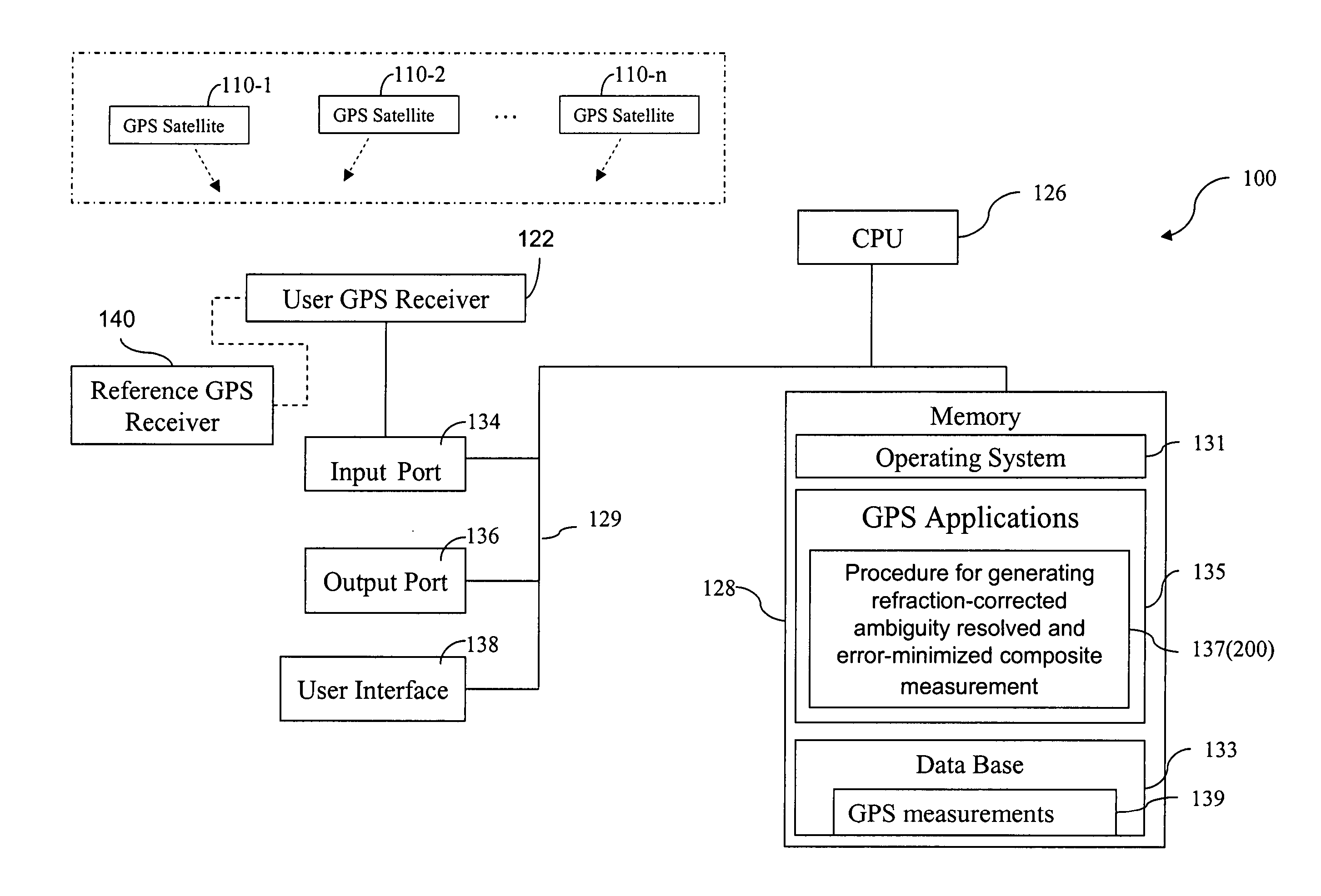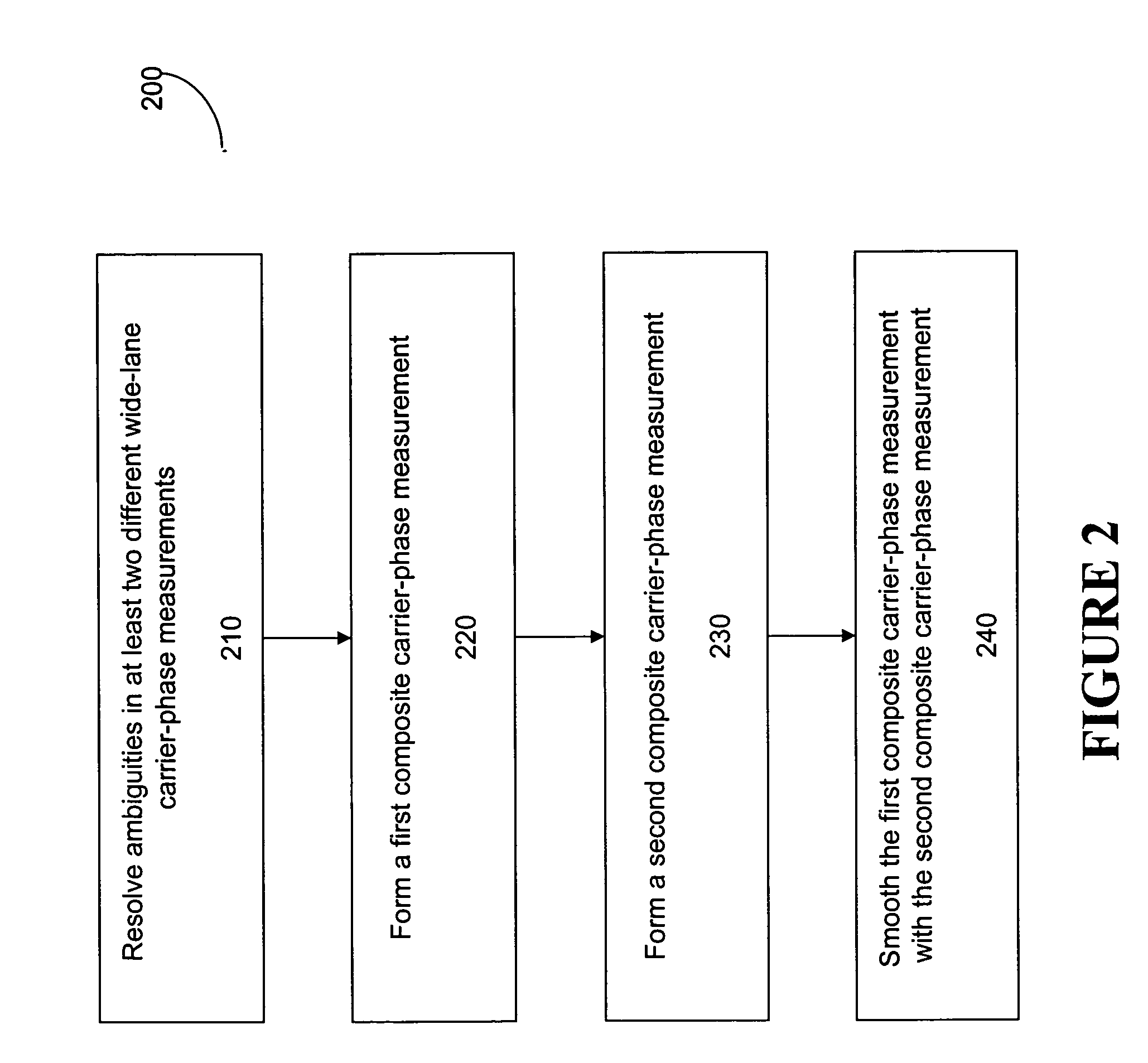Method for using three GPS frequencies to resolve carrier-phase integer ambiguities
a carrier-phase integer and frequency technology, applied in the field of using three gps frequencies to resolve carrier-phase integer ambiguities, can solve the problem of relative large multipath noise, and achieve the effect of removing baseline separation limitations
- Summary
- Abstract
- Description
- Claims
- Application Information
AI Technical Summary
Benefits of technology
Problems solved by technology
Method used
Image
Examples
Embodiment Construction
FIG. 1 illustrates a computer system 100 that can be used to carry out a method for generating an ambiguity-resolved, refraction-corrected, and noise-minimized composite carrier-phase measurement, according to one embodiment of the present invention. The computer system 100 is coupled to a user GPS receiver 122 which supplies to the computer system 100 GPS code and carrier-phase measurements based on signals from a plurality of satellites 110-1, 110-2, . . . , 110-n, where n is the number of satellites in view of the user GPS receiver 122. The user GPS receiver 100 may be in communication with a reference GPS receiver 140 also taking measurements based on signals from the plurality of satellites, which are used to generate corrections to the GPS measurements taken at the user GPS receiver. The plurality of satellites, or any one or more of them, are sometimes referred to hereafter in this document as satellite(s) 110. In some embodiments, the user GPS receiver 122 and the computer s...
PUM
 Login to View More
Login to View More Abstract
Description
Claims
Application Information
 Login to View More
Login to View More - R&D
- Intellectual Property
- Life Sciences
- Materials
- Tech Scout
- Unparalleled Data Quality
- Higher Quality Content
- 60% Fewer Hallucinations
Browse by: Latest US Patents, China's latest patents, Technical Efficacy Thesaurus, Application Domain, Technology Topic, Popular Technical Reports.
© 2025 PatSnap. All rights reserved.Legal|Privacy policy|Modern Slavery Act Transparency Statement|Sitemap|About US| Contact US: help@patsnap.com



